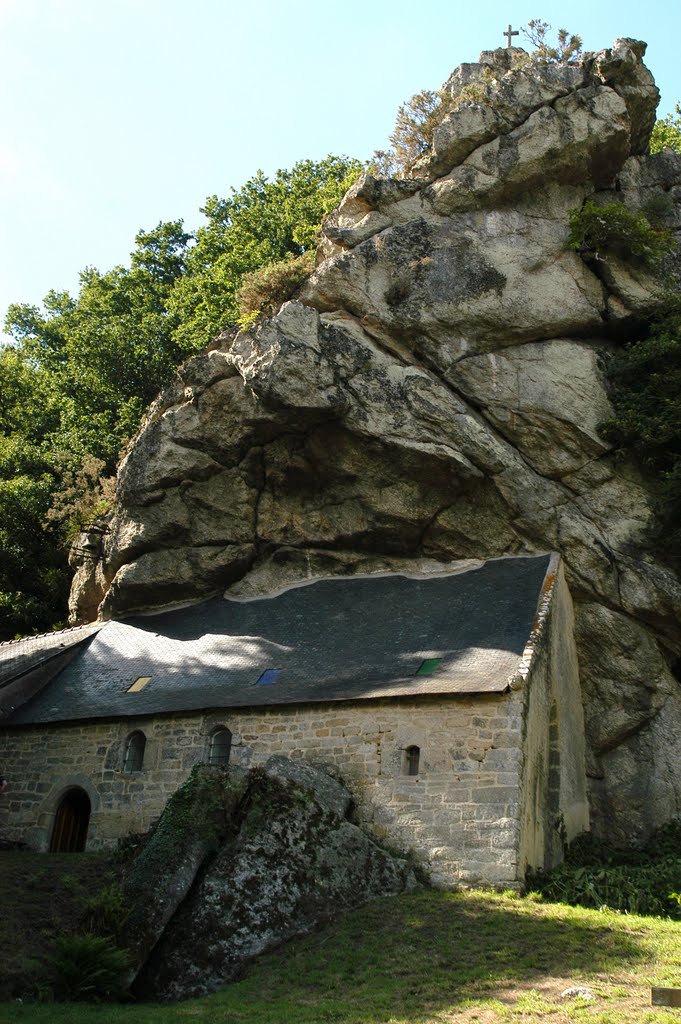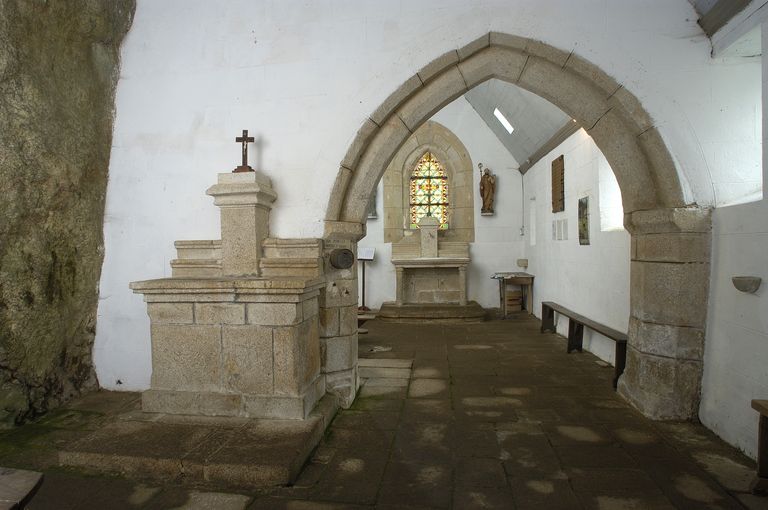 One special trip, at my request, was to the chapel of Saint Gildas. Gildas is well-known to those who study English history in the “dark ages”, because his De Excidio et Conquestu Britanniae is the first written history of Britain. In fact, it is pretty much the only documentary source for fifth and sixth century Britain. Bede’s History doesn’t appear until the year 731. But Gildas spent part of his career on the continent (he is supposed to have slain a dragon on a brief visit to Rome), and specifically in Morbihan, where he died. There are two written biographies of Gildas on which we depend for information, but they were written respectively in the ninth and twelfth centuries, and tell very dissimilar stories. The earliest life relates that Gildas converted the heathen of the Blavet valley by standing upon a great rock overlooking the river and shouting his exhortations. That sort of thing, apparently, worked in those days. When someone has already slain a dragon, he probably has a sufficiently forceful personality to pull it off. Anyway, the rock is still there, with a medieval chapel at its foot, and the place is wonderfully atmospheric. It being before the tourist season, Didier and I had it all to ourselves. Gildas lived, with one acolyte, in a tiny grotto underneath the rock, still accessible, until he returned to his monastery on the coast and completed Conquestu Britanniae. While the late medieval chapel was closed, I have found a picture of its interior.
One special trip, at my request, was to the chapel of Saint Gildas. Gildas is well-known to those who study English history in the “dark ages”, because his De Excidio et Conquestu Britanniae is the first written history of Britain. In fact, it is pretty much the only documentary source for fifth and sixth century Britain. Bede’s History doesn’t appear until the year 731. But Gildas spent part of his career on the continent (he is supposed to have slain a dragon on a brief visit to Rome), and specifically in Morbihan, where he died. There are two written biographies of Gildas on which we depend for information, but they were written respectively in the ninth and twelfth centuries, and tell very dissimilar stories. The earliest life relates that Gildas converted the heathen of the Blavet valley by standing upon a great rock overlooking the river and shouting his exhortations. That sort of thing, apparently, worked in those days. When someone has already slain a dragon, he probably has a sufficiently forceful personality to pull it off. Anyway, the rock is still there, with a medieval chapel at its foot, and the place is wonderfully atmospheric. It being before the tourist season, Didier and I had it all to ourselves. Gildas lived, with one acolyte, in a tiny grotto underneath the rock, still accessible, until he returned to his monastery on the coast and completed Conquestu Britanniae. While the late medieval chapel was closed, I have found a picture of its interior.
Sunday, May 5, 2014 — In Search of Gildas
Leave a Comment
You must be logged in to post a comment.

0 Comments.